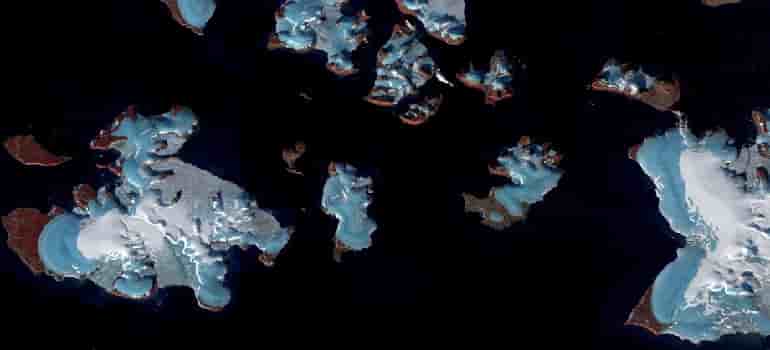As the UN marks the first-ever World Day for Glaciers, Suhora Technologies warns of rapid glacial lake expansion in India and neighboring regions, increasing the risk of devastating floods.
At the UN World Day for Glaciers on March 21, Indian Earth observation company Suhora Technologies raised concerns about the rapid expansion of some glacial lakes in the Himalayas, posing an increasing threat to communities in the region.
The United Nations’ World Day for Glaciers aims to enhance global awareness of the crucial role glaciers play in climate regulation and water security. With climate change accelerating glacial melt, Suhora’s latest research underscores the urgent need for monitoring and disaster mitigation strategies.
Expanding Glacial Lakes in India and Neighboring Regions
Suhora Technologies has compiled a comprehensive inventory of approximately 33,000 glacial & non-glacial lakes, including supraglacial lakes, spanning across 630 glaciers in the Indus, Ganga, and Brahmaputra basins of the Himalayan range in India and its neighboring regions. This extensive dataset is vital for assessing potential threats and understanding long-term glacial trends.
While not all glacial lakes in the region are expanding, several high-altitude lakes have shown alarming growth, significantly increasing the risk of Glacial Lake Outburst Floods (GLOFs). According to Suhora’s analysis, some glacial lakes in India and neighboring Himalayan regions have expanded notably, making proactive disaster preparedness essential.
One striking example of glacial retreat identified through Suhora’s satellite monitoring is a rapidly changing glacier on the Nepal-China border, which has visibly altered shape due to ice loss over time. This highlights the broader trend of glacial shrinkage across the region.
Glacial Lake Outburst Floods: A Growing Threat
GLOFs occur when natural ice or debris dams holding glacial lakes fail, causing sudden, destructive floods. A recent example is the 2023 South Lhonak Lake outburst in Sikkim, which caused severe damage to infrastructure, livelihoods, and lives. With climate change accelerating glacial melting, the risk of such disasters is increasing.
Suhora Technologies emphasizes the need for a multi-pronged approach to mitigate these threats, including:
- Early warning systems for real-time monitoring
- Controlled drainage techniques to manage water levels safely
- Community preparedness programs to minimize disaster impacts
The company is actively working on advanced downstream solutions, integrating satellite intelligence, sensor-based monitoring, and predictive analytics to develop more effective risk mitigation strategies.
At the first UN World Day for Glaciers , Suhora’s findings highlight the pressing need for global cooperation and action. Governments, policymakers, and environmental organizations must prioritize glacier conservation, invest in monitoring infrastructure, and support local communities at risk from these changes.
With the Himalayan region being home to some of the world’s largest glacial systems, ensuring their preservation is crucial—not just for regional stability but for global climate resilience and water security.


